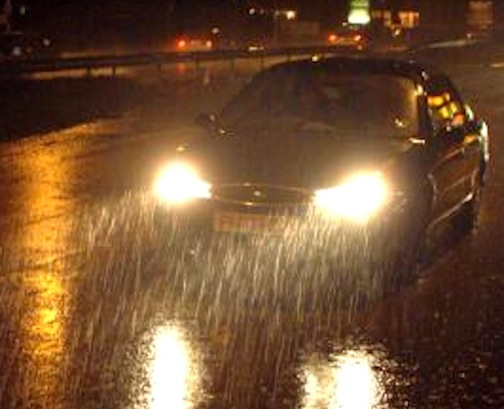Mind-Boggling Future Car Tech That Can Really Make a Difference
Posted on Jan 21, 2019 in Safety | 2 comments

I like in-car technology. To a point.
I can’t live without heated seats, air conditioning and a pumping audio system, but back-up cameras, internet connectivity and touchscreens are all beyond the realm of necessity in my book.
With each new model year, there are new techno bits placed in our cars that are meant to entertain and inform us, but usually just end up distracting us. Even the stuff meant to keep us safe seems redundant and unnecessary to anyone who actually pays attention while driving. Blind-spot monitoring? Turn your head. Lane-departure warning system? Drive straighter.
But how about technology that can see through rain and snow, eliminating that scary white-out situation we’ve all experienced on the nation’s highways?
That’s a box I’d check on the options list of a new car.
The Popular Science website has a fascinating story on headlights. I know, I never thought I’d type that sentence either, but these headlights are special.
Researchers at Carnegie Mellon University think they have solved the mystery of how to improve visibility on snowy or rainy nights.
By detecting and tracking individual rain droplets or snow as they fall through a car’s headlight beams, they’ve created a system that can “dis-illuminate” them by adjusting the headlight beams to only shine around them rather than on them.
Think about that. A computer, camera, projector and beam splitter on the car individually monitor the trajectory of every falling drop, and then adjust the light beams to shine around those drops or temporarily switch off, resulting in a dramatic decrease in the amount of light reflection coming back to a driver’s eyes. That’s incredible.
There is room for improvement, as 70 percent of drops were eliminated in tests when moving at 18 miles per hour, and just 15-20 percent when moving at 60 mph. Still, it would make a difference in the safety of night driving.
This is the kind of future technology that should get attention, because it actually improves the driving experience, rather than simply contributing to a culture of laziness behind the wheel.





.gif)


You said it yourself. Blind spot monitoring? Just turn your head. Lain departure warning? Drive straighter. Heavy rain? SLOW DOWN. Visibility isn’t the only problem, hydro planing can quickly put you in he ditch. Seeing better so you can drive faster at night in a heavy rain is not doing the driver any favors, it’s actually encouraging them to drive dangerously. (That’s called an unintended consequence.)
Kind of like my coworker, an Indian engineer (very smart otherwise) who rear ended someone because he had ABS and tailgated, thinking ABS helps stop in a shorter distance. It doesn’t. (The ABS distance can actually be slightly longer than a full lockup stop.) ABS simply keeps the tires from locking up so you can still steer. He got an expensive lesson that day and injured several innocent people.
Just as a follow up, yesterday a had a 25 mile trip on a freeway right after a heavy rain, and was held up by three different accidents. ALL of them were single vehicles spun out and off the road, obviously from hydroplaning during a heavy rain because the drivers were going too fast. If those eggheads want to build something useful, it will detect heavy rain and hydroplaning and slow down the vehicle. Of course, that would be against the American way, which is to go fast and damn the risk.